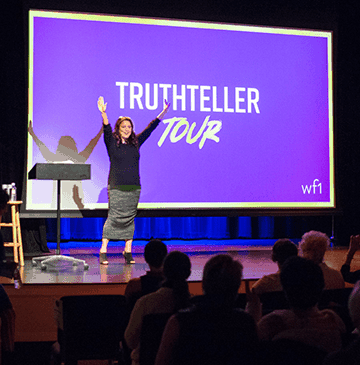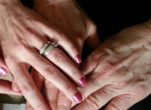
A Widow’s Unexpected Outcome of Grief
After the death of my husband in 2000, my world splintered into tiny pieces. Everything changed, including myself. I missed our evening visits over a glass of wine after a long day at work, his smile as we said goodbye in the morning, and the love notes we left each other on the refrigerator when we were apart.
Trying to make sense of my life, I read books about the “stages of grief” and honestly believed that once I got through the first year, I would be fine. After 18 months of tears and anger, I finally accepted the loss and realized I needed to invent a new Diane. The process of rebuilding took a great deal of energy and soul-searching. I spent six years alone revisiting activities I enjoyed before I met John. I created a studio in my basement, where I dabbled in various art forms. After months of inactivity, I began taking short walks that eventually turned into several miles a day and resulted in a healthier me.
I took solo road trips and spent time at my favorite Minnesota resort. With the sound of Lake Superior’s waves crashing against the shore and a fire crackling in the fireplace, I wrote late into the night. Eventually, I wove pieces of those notebook entries into my grief story, Twenty-Eight Snow Angels: A Widow’s Story of Love, Loss and Renewal.
As I read the final manuscript, I hesitated sharing such a personal story with the world. Finally, in 2011, I put the fears behind me and released it into the universe. I have shared my story with local grief groups. After one presentation, the after care director wrote: “You are such an inspiration for grieving hearts. Your transparency and down-to-earth wisdom are deeply appreciated.” Her comment made me realize there is power in sharing our stories with others.
Readers’ positive response to Twenty-Eight Snow Angels inspired me as a writer. In 2012, I took the leap from memoir to fiction and began drafting an historical novel about two Japanese teenagers, Yasu Sakamoto and her brother, Haro, who are imprisoned in a WWII Japanese internment camp in California after the bombing of Pearl Harbor. The book took three years of research, multiple drafts, and a great deal of self-doubt. There were times I felt like giving up, but my determination to open readers’ eyes to the hardships, racial discrimination, and injustices thousands of Japanese Americans were forced to endure during the war motivated me to keep going.
In 2015, I released Courageous Footsteps: A WWII Novel. Even though Courageous Footsteps is based on an historical event in America, the message of the book is a timely topic that builds understanding of acceptance of others and is still relevant in a United States that is often torn and divided by racism and anger today.
Positive reader response to my novel, Courageous Footsteps, inspired me to write the sequel, Yasu’s Quest: A Tale of Triumph. The book, released in July 2016, continues Yasu Sakamoto’s journey from the prison camps into the next phase of her life. Bombarded with barriers of discrimination and prejudice, Yasu realizes—like the barbed-wire fences—that here will always be obstacles in her life that take courage, determination, and sometimes the support of others to overcome.
In the early months of grief as I pushed myself through the painful loss, I never imagined I would have the strength or determination to write a book, much less three. Sometimes, in the darkest places of life, we find the strength and determination that push us to reach our potential and beyond.










1 comment to "A Widow’s Unexpected Outcome of Grief"